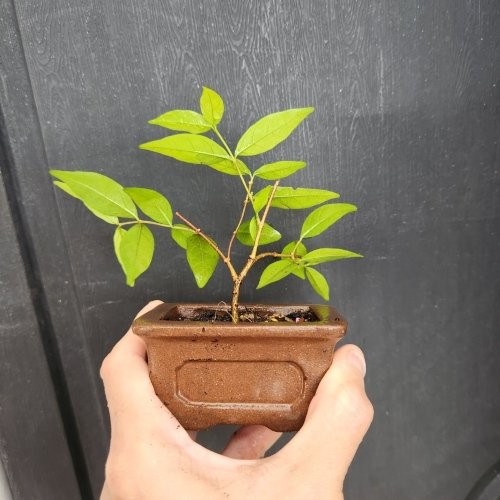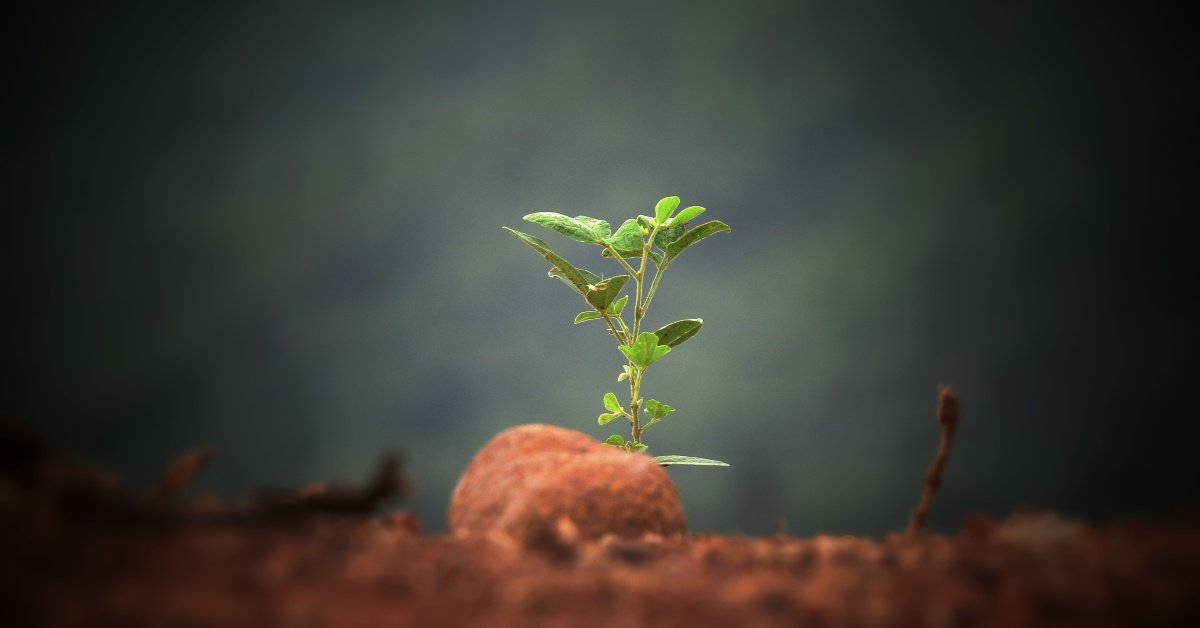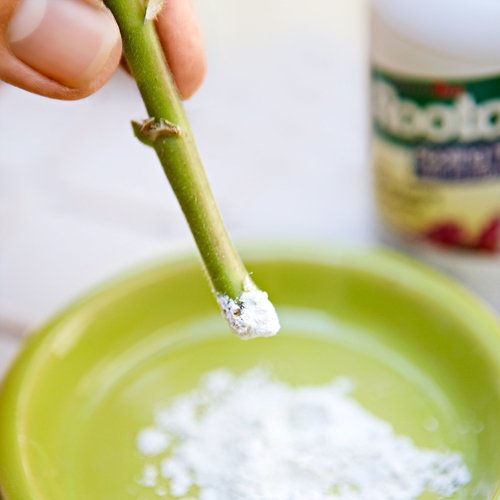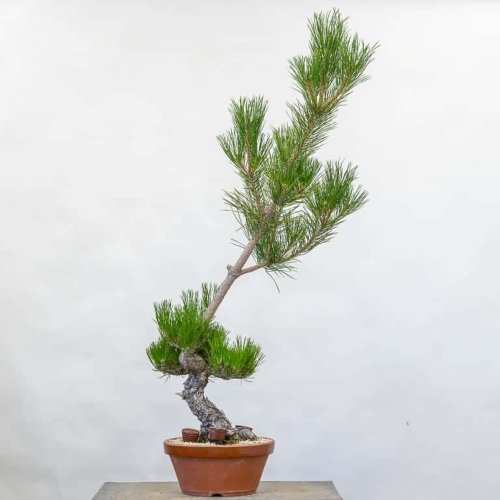While many bonsai trees start from seeds or nursery stock, there’s a unique joy in growing a bonsai from a cutting. In this post, we’ll explore the ins and outs of this method, from selecting the perfect cutting to nurturing it into a mature masterpiece.
Pros and Cons of Growing Bonsai from Cuttings
Preservation of Tree Lineage and Heritage:
Growing a bonsai from a cutting allows you to preserve the genetic heritage of a cherished tree. Whether it’s a family heirloom or a tree with historical significance, starting with a cutting ensures that its unique traits and characteristics are passed down through the generations.
Accelerated Growth Compared to Seeds:
Using cuttings can significantly expedite the bonsai-growing process. Unlike seeds, which can take years to germinate and grow into mature trees, cuttings can develop into bonsai specimens in a fraction of the time. This means you can enjoy the beauty of a mature bonsai much sooner.
Greater Control Over Bonsai Design and Development:
Starting with a cutting provides unparalleled control over the bonsai’s design and development. From the very beginning, you can shape the tree according to your artistic vision, guiding its growth to achieve the desired aesthetic. This level of control allows for more precise shaping and training, resulting in truly unique and personalized bonsai creations.
Cost-Effective Method for Obtaining New Bonsai Specimens:
Growing bonsai from cuttings can be a cost-effective way to obtain new specimens. Cuttings can often be obtained for free or at a minimal cost, especially if sourced from your own trees or from fellow bonsai enthusiasts. This makes it an accessible option for those looking to expand their bonsai collection without breaking the bank.

However…
Variable Success Rates Depending on Species and Conditions:
While growing bonsai from cuttings can be rewarding, success rates can vary depending on the species of tree and environmental conditions. Some species may root more readily than others, and factors such as temperature, humidity, and soil quality can influence rooting success. It’s important to research the specific requirements of the tree species you’re working with and provide optimal growing conditions to maximize success.
Requires Patience and Dedication During the Rooting Process:
Rooting a bonsai cutting requires patience and dedication. It can take several weeks or even months for roots to develop, and during this time, the cutting requires careful monitoring and maintenance. It’s essential to provide consistent care and attention to ensure successful root growth, which may require a significant investment of time and effort.
Limited Availability of Suitable Cutting Sources:
Finding suitable cutting sources can sometimes be challenging, especially for rare or uncommon tree species. While cuttings can often be obtained from your own trees or from other bonsai enthusiasts, the availability of specific species may be limited. Additionally, obtaining cuttings from reputable sources is important to ensure the health and quality of the resulting bonsai.
Potential for Disappointment if the Cutting Fails to Root or Thrive:
Despite your best efforts, there is always a risk that a bonsai cutting may fail to root or thrive. Factors such as disease, pests, or improper care can all contribute to the failure of a cutting to establish itself as a viable bonsai specimen. This can be disappointing, especially after investing time and effort into nurturing the cutting. However, it’s important to view failures as learning opportunities and to persevere in your bonsai journey.

Discover the Pros and Cons of Growing From Seed
Dive into our analysis of why you should consider growing your very own bonsai tree from seed. From freedom to shape, unique varieties, to a lifelong bond.
Selecting the Perfect Bonsai Cutting
Choosing the right cutting is paramount for success. Here’s what to consider:
1. Health and Vitality
Opt for a cutting with vibrant, healthy foliage and robust stems. Avoid any signs of disease or pest infestation, as these can impede the plant’s ability to root and thrive.
2. Seasonal Timing
Timing is crucial when taking cuttings. Aim to collect them during the spring or early summer when plants are actively growing and more likely to root successfully.
3. Size and Structure
Select a cutting with the desired characteristics for your bonsai design. Consider factors such as trunk thickness, branch arrangement, and overall proportions to ensure compatibility with your vision.
Once you’ve chosen the perfect cutting, it’s time to initiate the propagation process. Here’s a step-by-step guide to get you started:
Preparing the Cutting
Taking the Cutting: Use clean, sharp pruning shears to take a cutting just below a leaf node. Make a clean, diagonal cut to maximise the surface area for root growth.
Removing Leaves: Trim off excess foliage, leaving only a few leaves or needles at the top of the cutting. This reduces moisture loss and redirects the plant’s energy towards root development.
Rooting the Cutting
Rooting Hormone: Dip the cut end of the cutting into a rooting hormone powder to stimulate root growth. This can significantly improve the cutting’s chances of rooting successfully.
Planting Medium: Plant the cutting in a well-draining rooting medium such as perlite, vermiculite, or a mixture of substrates including sand. Ensure the medium is moist but not waterlogged to prevent rotting.
Humidity and Temperature: Place the cutting in a warm, humid environment with indirect sunlight. A propagation dome or plastic bag can help maintain high humidity levels around the cutting, promoting root development. Make sure to cut air holes into the sides to enable gas exchange and prevent fungal growth.
Patience and Monitoring: Rooting can take several weeks to several months, depending on the species and environmental conditions. Monitor the cutting regularly, keeping the rooting medium consistently moist and adjusting environmental conditions as needed.

Next Steps
Enhancing Taper through Pruning
Taper, the gradual decrease in trunk diameter from base to apex, is a hallmark of mature bonsai trees. While bending shoots can introduce curvature, pruning is the key to sculpting a trunk with dynamic movement and elegant taper. By strategically pruning back to branches that diverge in different directions, you can create a trunk that exudes grace and balance. Remember to avoid abrupt transitions in taper by planning cuts carefully and pruning branches before they grow too large.
Accelerating Growth with Sacrifice Branches
Sacrifice branches are nature’s accelerators, propelling trunk growth to new heights. These selected branches are allowed to grow unchecked, absorbing nutrients and energy to thicken the trunk rapidly. However, harnessing the power of sacrifice branches requires finesse. Focus on selecting branches strategically, avoiding the lower part of the trunk to prevent scarring and removing unproductive growth promptly. By judiciously employing sacrifice branches, bonsai enthusiasts can fast-track the development of robust, commanding trunks.
Understanding Branch Ramification
Branch ramification refers to the intricate branching structure of a bonsai tree, characterised by the presence of numerous small branches and twigs. This level of refinement enhances the tree’s overall aesthetic and creates the illusion of age and maturity.

Example of a sacrifice branch to help thicken the trunk
Credit: Bonsai Tonight
Developing Branches
Developing well-defined branches is essential for creating a balanced and visually appealing bonsai tree. Here’s how to encourage branch development:
Pruning Techniques: Regular pruning helps stimulate back-budding and encourages the growth of new branches. Use sharp pruning shears to selectively remove unwanted growth and encourage branching where desired.
Wiring and Training: Wiring can be used to shape and position branches as they develop. Carefully wrap the wire around the branch and gently bend it into the desired position, taking care not to damage the bark or foliage.
Pinching and Defoliation: Pinching back new growth and selectively defoliating the tree can help encourage branching and refine branch structure. Be mindful of the tree’s health and vigour, as excessive pinching or defoliation can weaken the tree.
Encouraging Short Internodes
In the initial phases of bonsai development, the goal is to promote rapid growth. However, in the phase of branch ramification, the focus shifts to slowing down growth to encourage short internodes.
Internodes are the spaces along a trunk or branch where buds can form. Longer internodes result in fewer opportunities to create compact, well-ramified trees. Therefore, it’s essential to encourage the production of short internodes during this phase.
Gradual Reduction of Branches
While the instinct may be to remove flawed branches immediately, this approach can stimulate long shoot growth, counterproductive to achieving short internodes. Instead, it’s advisable to leave more branches than needed for the final design and gradually reduce them over several years. For example, try removing half of the branches one year and the remaining half the following year.
The overall time frame for removing unnecessary branches isn’t critical. The key is to spread out the pruning to allow the tree to produce balanced growth throughout this phase of development.
Propagating a bonsai tree from a cutting is a labour of love that requires patience, dedication, and a keen understanding of horticultural techniques. By selecting the right cutting, providing optimal growing conditions, and employing careful pruning and training techniques, you can nurture a humble branch into a stunning bonsai tree that reflects the beauty and elegance of nature. Enjoy the journey and the satisfaction of creating your own living work of art.
Are you new to Bonsai?
The art of Bonsai has developed over thousands of years with masters from across the world creating magnificent trees. There is no need to be intimidated as you can learn whilst growing your very own Bonsai tree that can live with you for the rest of your life. Transform your home or urban garden with a living piece of art. Get started today!
Would you like to join the Yugen Community and receive our seasonal newsletters, including top tips and news from the Bonsai world?
Don’t forget the exclusive discounts and offers!
Enter your email address below and you will also receive a coupon code to redeem free delivery on your first order.
SHOP BONSAI
Visit our shop to browse our selection of classic seeds for bonsai, specialist tools, pots and starter kits to begin your journey. Take up the therapeutic hobby of Bonsai and experience the many benefits of honing this skill, all whilst adding a beautiful piece of nature to your home.
